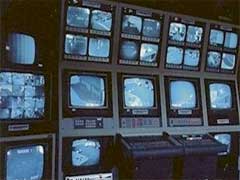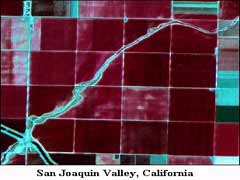 |
||||||||||||||||
 |
||||||||||||||||
 |
||||||||||||||||
 |
||||||||||||||||
|
||||||||||||||||
 |
||||||||||||||||
 |
Digital Visualization | J.Johnston writes: 'Machinic Vision, as I shall use the term, presupposes |  |
|||||||||||||
What is visual and visualized today ranges in a far wider field then ever before. From satellite pictures, Hubble's telescopical recordings to medical images of the insight of the human body and microscopical images - it is now possible to present things in virtuality, so composed from digital data, that could never be seen in any other way. All those images recorded, produced, delievered or interpreted with electronic devices have one thing in common - they are now based on binary code - 0s and 1s, counted in bits and bytes, which are an abstract form of a computational process thus transmitting information. In this sense now images become exactly the same as any other information within the electronic translation systems, eventhough the output can take very different forms. Crucially one very essential distinction of the digital is its unfinished form. What allows instantaneous transmission within a machinic assemblage of images, is as well the inherent principle for recomposition, mani- pulation and decontextualisation. Following (and extending) Deleuze by using his expressions of machinic and deterritorializing (decoding), J. Johnston describes the machinic vision not that much as a simple seeing with or by means of machines - although it does presuppose this - as a decoded seeing, a becoming of perception in relation to machines that necessarily also involves a recoding. Establishing images on the basis of information technology enmeshes necessarily a predefined code - a pattern - which constitutes a relation to the used technology. But even depending on a more or less universal code, does not give any stable context, therefore the reliance in the function of abstraction of the entailed processes has great impact on the evolving perception. In some way endless circuits are established, where technology helps to create technology to distribute perception. One of the more simple systems to understand the issue is probably CCTV (Closed Circuit Television), which already exhibits the whole problematic. It is not only fact that technology does not develop without any social context, so there is also influence of the human programmed code and the perception of individuals involved to establish these systems. It is quite clear that technological processes involved in transmission of data are not neutral. They initiate new modes of consumption, as they also influence experiences of embodiment and this reflection leads back to a change in the codes of representation used within the field. Here we are at the very core of the mutable signification of the represented information. |
||||||||||||||||
| ... not only an environment of interacting machines and human-machine systems but a field of decoded perceptions that, whether or not produced by or issuing from these machines, assume their full intelligibility only in relation to them.' | ||||||||||||||||
| Who or how is
the huge amount of image stream of surveillance cameras (CCTV) looked
at? CCTV - Überwachungsdrama Schau mir in die Augen, Kleines |
As the machinic has been actualized in our everyday experience, there is a profound alteration in the way how reality and thereby truth are constructed. The claim that technological vision and electronic sight, so they are connected to scientific research, are delievering operational and therefore objective images neglects the fact that the machinic vision entails a concept of constitution of perception and visualization, which derives from its own construction and the social context. iconoclash Iconoclash Presentation |
|||||||||||||||
 |
||||||||||||||||
| Satellites distributing
unseen sights, but important is who has access and who is interpreting
them. |
Transparency of sight is mainly seen as connected to higher powers, today technical sight, which in many cases was first developed for military purpose of the more powerful, is still transporting this intention. Here the whole myth about technological sight as delivering scientific images is implemented. Yet it is still a question who has access to information and who interprets it. More then ever images have to be read in context and in regard of the distributing source, they descend from. ctrl [space] The myth of surgical bombing Human Rights Abuses Monitored with Satellite Imagery: Myth or Reality? |
|||||||||||||||
 |
||||||||||||||||
| Biometrical identifiction
systems like facerecognition and irisscan - is that how technology
looks at us? |
||||||||||||||||
 |
Today networking systems as well as humans connected via computers exchange digital data and this leads obviously to an omni-linearity within the data matrix. Developing from this source and expanding within it the visualization of former invisible objects has been gaining great attention. |
|||||||||||||||
| Operational images deliever
another view which can not be perceived without machinic extentions. |
This way the interpretation
of the visible reality became replaced through the production of visibility
and also by the production of virtual reality. And, besides all human-machinic
influences and interaction, what is more important, it cannot be done
without the recoding of a machinic interpretation. So to see
means actually to interpret successfully the information in the constant
change of code of representation digital data is transmitting. What is iconoclash? Jenseits der Gesellschaft (pdf-document) |
|||||||||||||||
 |
||||||||||||||||
| GPS farming and Real-time fertilization as one of the ultimate proofs for the objectivity of digital sight distribution? | ||||||||||||||||
 |
||||||||||||||||
 |
||||||||||||||||
